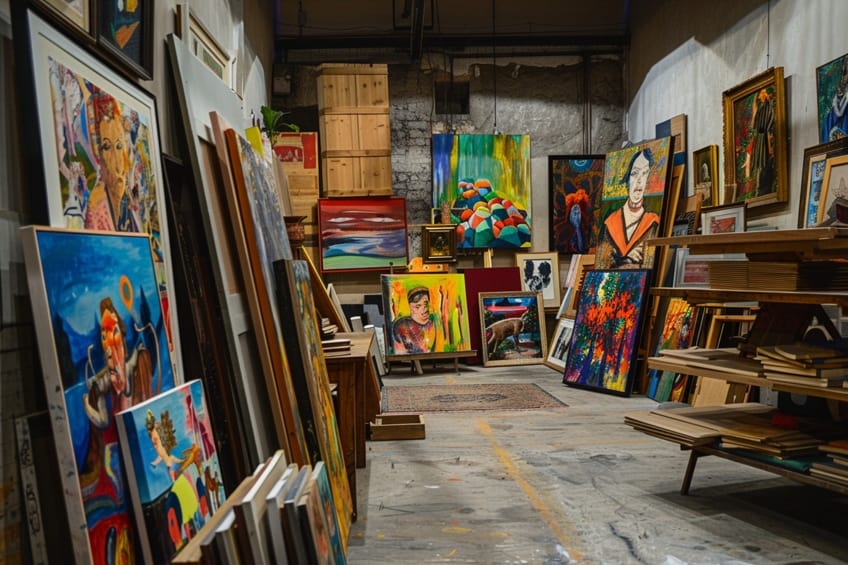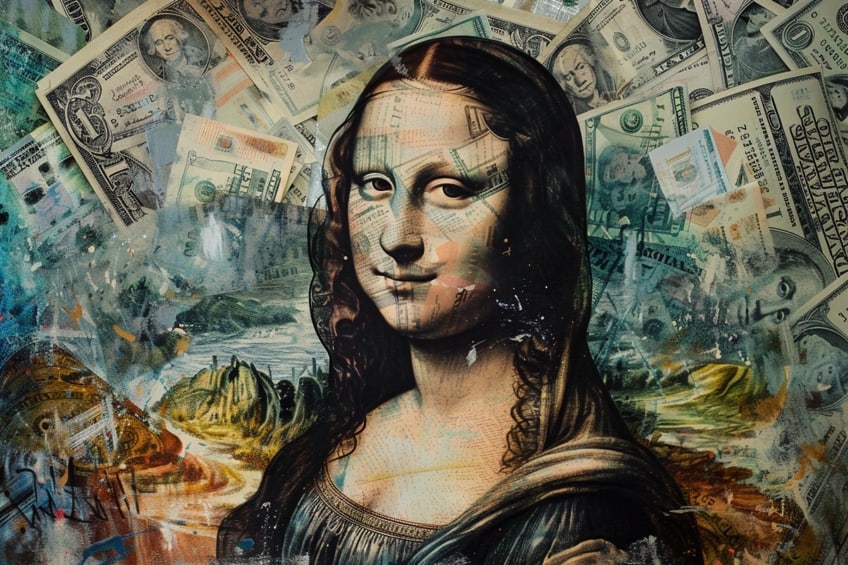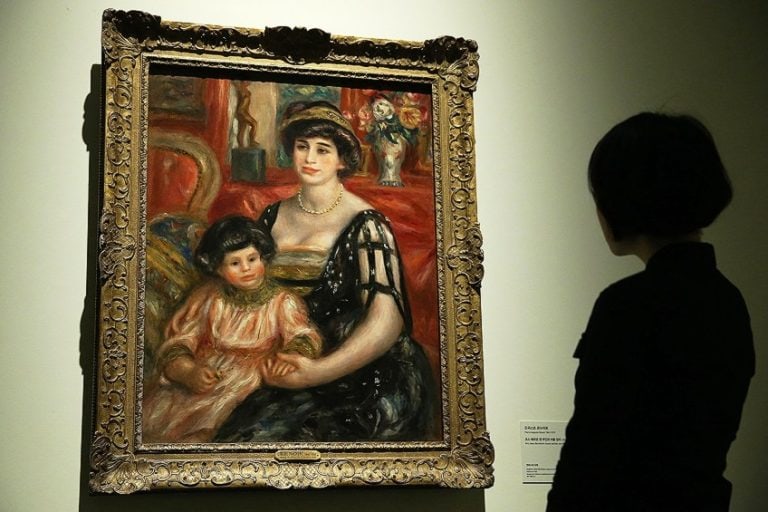How to Find the Value of a Painting – Art Appraisal 101
Determining the value of a painting is a multifaceted process that combines art expertise, market trends, and historical context. Whether you’re an art collector, investor, or enthusiast, understanding how to assess the value of a painting is crucial. This article delves into key factors that contribute to a painting’s worth, including the artist’s reputation, provenance, condition, style, and current market demand. By exploring these elements, you’ll gain insights into navigating the complex landscape of art valuation and making informed decisions regarding artworks.
Key Takeaways
- Painting valuation is influenced by factors like artist fame, artwork condition, history, and scarcity.
- Utilizing a combination of professional appraisals and art market resources is critical for accurate value estimation.
- Recognizing the distinctions between originals and reproductions is key in the initial stages of self-appraisal.

Understanding the Value Determinants of Paintings
Determining the value of a painting is a multifaceted process involving history, art knowledge, and a keen eye for detail. Whether you are a collector, an investor, or simply inherited artwork, ascertaining the financial worth of a painting is essential for insurance purposes, tax obligations, or potential sale. A painting’s value can vary significantly depending on a number of determinants including the artist’s renown, the artwork’s condition, its provenance, rarity, and market demand.
Valuation of paintings intertwines with numerous factors, from the tangible aspects such as medium and condition to the painting’s historical pedigree and market dynamics.
Grasping these determinants equips collectors and investors to navigate the fine art market more adeptly. To accurately evaluate a painting, one often needs to access various art valuation resources. These can range from auction house databases and price guides to professional appraisers and online valuation tools.

Each resource provides insights into comparable market prices and historical sales data, which are crucial for making informed judgments. For those looking to self-appraise, understanding how to identify a painting, distinguishing original works from prints or reproductions, and conducting a reverse image search might serve as initial practical steps before seeking expertise from qualified appraisers.
Assessing the Medium and Condition
The medium and condition of a painting contribute significantly to its value. A pristine oil painting might fetch a higher price than a watercolor due to durability and the market’s preference. The condition entails checking for dimming, cracks, or restorations, as they impact longevity and visual appeal.

Significance of Provenance and Historical Importance
A well-documented provenance affirms authenticity and ownership history, from the specific artist’s studio to the current owner. The association with Old Masters or renowned figures in art history can exponentially enhance a piece’s market value.
Aesthetic and Artistic Merit Evaluation
Artistic merit evaluates the intrinsic beauty and design qualities of a painting. It embodies an artist’s proficiency and the aesthetic value of fine art. Contemporary art might leverage unique styles that disrupt traditional aesthetics, affecting valuation.

Market Demand and Rarity
Market demand and rarity act as pivotal determinants—the peak interest in specific genres or artists and whether the work is a limited edition influence art prices. Auction houses mirror current tastes, with high demand often leading to higher prices.
Comparative Analysis and Art Sales Records
Comparative analysis reviews similar works by the artist or within a genre. It involves scrutinizing auction records and price databases to estimate a painting’s worth against auction prices. Frequent visibility in auctions can denote market robustness for an artist’s works.

Navigating Art Valuation Resources
When attempting to find the value of a painting, individuals must consider various authoritative resources and experts in the field. This section introduces three main avenues to assist collectors and art owners in accurately determining the worth of their artworks.
Roles of Professional Appraisers
Professional appraisers are trained specialists who provide a detailed estimate of a painting’s value. They often hold memberships in organizations such as the Appraisers Association of America, which ensures a standard of ethics, education, and professionalism. Appraisers conduct thorough research, considering factors such as provenance, condition, and market trends to provide transparent and reliable valuations.

Utilizing Auction House Expertise
Auction houses possess extensive archives of auction results, which can be invaluable in assessing the value of a painting. Specialists within these institutions analyze past and present auction data, producing estimates that reflect current market conditions.
Transparency in auction transactions allows for a clearer understanding of an artwork’s market value.
Leveraging Online Price Databases and Publications
Online price databases offer access to a wealth of auction results and sales information, allowing for comparative research when valuing a painting. Publications in the art world are also beneficial, providing insights into market trends and artist profiles. Together, these resources help form a more complete and informed estimate of a painting’s financial worth.

Practical Steps to Appraise Paintings
Assessing the value of a painting involves meticulous research, expert consultation, and an understanding of market trends. Accurate appraisal is essential to establish the fair market value.
Initial Artwork Research and Documentation
To begin appraising a painting, one must first engage in thorough research. This process includes:
- Documenting details: Record the artist’s name, painting’s title, dimensions, medium, condition, and any signatures or inscriptions.
- Provenance tracking: Determine the artwork’s history of ownership. This information is crucial in assessing its value.
- Comparative analysis: Examine recent sales of similar artworks by the artist or within the same genre. This comparison provides a benchmark for the fair market value.

Reaching Out to Appraisal Experts and Galleries
Once initial research is conducted, seeking professional advice is advised.
- Certified appraisers: Contact members of professional bodies such as the Appraisers Association of America for a formal evaluation.
- Gallery consultation: Approach established galleries that specialize in the artist’s work or period. Galleries often provide verbal evaluations or guidance on a painting’s worth.
Considering Secondary Market Fluctuations
The secondary market plays a significant role in valuing art.
- Auction prices: Review recent auction results for comparable works to gauge the piece’s market value. Auction houses publish prices which serve as a leading indicator for demand.
- Art sales trends: Observe art market reports and indexes for trends affecting the subject matter or artist of the painting. Shifts in the secondary market can heavily influence a painting’s worth.

Determining the value of a painting involves a blend of art historical knowledge, market awareness, and critical assessment. By considering factors such as the artist’s reputation, provenance, condition, style, and market demand, individuals can gain a comprehensive understanding of an artwork’s worth. Additionally, consulting with art experts, appraisers, and auction houses can provide valuable insights and guidance in the valuation process. Ultimately, a nuanced approach that combines expertise with research empowers collectors and enthusiasts to navigate the art market confidently and make informed decisions regarding the acquisition and appraisal of paintings.
Frequently Asked Questions
What Are the Best Methods for Determining the Value of a Painting?
Experts often assess a painting’s value by examining the artist’s reputation, provenance, rarity, and condition. They may also consider the artwork’s historical significance and its aesthetic qualities such as the medium, size, and subject matter.
Are There Any Free Tools Available for Valuing a Painting?
Yes, there are several online resources and databases that provide access to auction records, artist biographies, and price indices, which can offer a preliminary understanding of a painting’s value. Public libraries and non-profit art organizations may also help with information.
What Are the Signs That Indicate a Painting May Be Valuable?
Signs that a painting may be valuable include a signature from a recognized artist, high-quality materials and craftsmanship, a notable history of ownership, or inclusion in important exhibitions and art publications. Catalogs raisonnés and auction results can provide important clues as well.
Isabella studied at the University of Cape Town in South Africa and graduated with a Bachelor of Arts majoring in English Literature & Language and Psychology. Throughout her undergraduate years, she took Art History as an additional subject and absolutely loved it. Building on from her art history knowledge that began in high school, art has always been a particular area of fascination for her. From learning about artworks previously unknown to her, or sharpening her existing understanding of specific works, the ability to continue learning within this interesting sphere excites her greatly.
Her focal points of interest in art history encompass profiling specific artists and art movements, as it is these areas where she is able to really dig deep into the rich narrative of the art world. Additionally, she particularly enjoys exploring the different artistic styles of the 20th century, as well as the important impact that female artists have had on the development of art history.
Learn more about Isabella Meyer and the Art in Context Team.
Cite this Article
Isabella, Meyer, “How to Find the Value of a Painting – Art Appraisal 101.” Art in Context. March 20, 2024. URL: https://artincontext.org/how-to-find-the-value-of-a-painting/
Meyer, I. (2024, 20 March). How to Find the Value of a Painting – Art Appraisal 101. Art in Context. https://artincontext.org/how-to-find-the-value-of-a-painting/
Meyer, Isabella. “How to Find the Value of a Painting – Art Appraisal 101.” Art in Context, March 20, 2024. https://artincontext.org/how-to-find-the-value-of-a-painting/.











